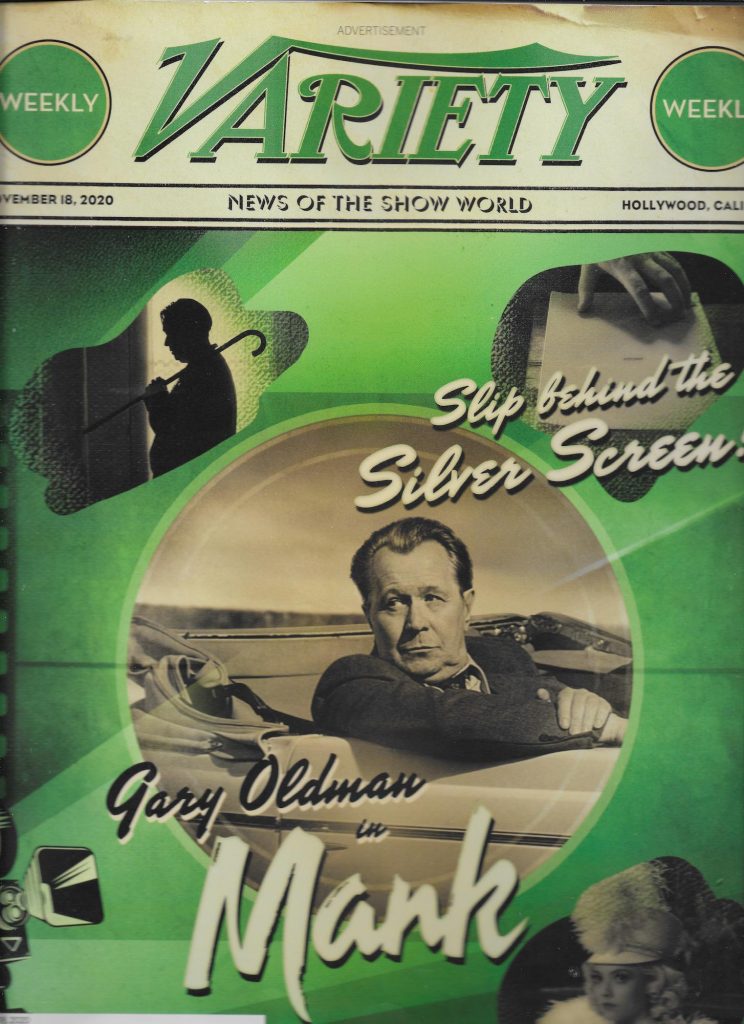Longtime film critic at Variety, dating back to the Silverman
era, recently got the axe at The
Hollywood Reporter and thereupon penned the following piece on his hirings
and firings over the past decades for Deadlikne,
an on-line show biz newsletter.
We here reproduce the
sections dealing with his period at the old Daily
Variety:
—-
A month ago I was surprised, out of nowhere, to get a nice raise. Yesterday I got the boot. By guys I’ve never met. Apparently if you make over a certain amount, you’re suddenly too expensive for the new owners of The Hollywood Reporter, which has recently been reported as losing in the vicinity of $15 million per year. Dozens are being forced to walk the plank. It’s a bloodbath.
Then
again, I’ve seen this all before. During my 44-year career at the trades—with
occasional time-outs to write books and make documentary films—I’ve had two
stints each at Variety and The Hollywood Reporter, each gratifying
and exciting in their own ways. Twice I left voluntarily to pursue other
projects, twice I was let go when management changed hands and Robespierres
took over, and twice more I was courted by new editors whom I choose to
consider highly enlightened.
I’d written film reviews in college for four years, had my first book, Kings of the Bs: Working Within the Hollywood System, published and moved to Los Angeles. I soon got a day job as Elaine May’s assistant on Mikey and Nicky, while at night I helped populate the party scenes for Orson Welles’s The Other Side of the Wind at Peter Bogdanovich’s house while the owner was away shooting Daisy Miller in Italy. Life was good for a young kid getting his feet wet in Hollywood.
I was also able to get a sideline gig as second-string film critic at The Hollywood Reporter under Arthur Knight, a first-rate historian and teacher who long wrote for the Saturday Review. Fortuitously, genial Arthur was very keen on hosting movie-based cruise ship excursions and was therefore out of town much of the time, leaving it to me to review lots of great and major films of the mid-1970s, beginning with Barry Lyndon and The Man Who Would Be King.
But it was good ol’ Jethro from The Beverly Hillbillies who gave me my first lesson in the inner workings of Hollywood. In June of 1976, Warner Bros. was set to release Ode to Billy Joe, inspired by the hit Bobby Gentry song. I filed a dismissive review, which was published, but the next day got a call from my editor, B.J. Franklin, who conveyed the news that Jethro, otherwise known as Max Baer Jr., the director of the film, was not a bit pleased with my notice. Would I perhaps consider taking another look at it with an eye to revising my opinion upward?
When
I refused this opportunity, B.J. proposed that I interview Max about the film.
I politely declined. The next day I was informed me that my services would no
longer be required at the Reporter,
and also learned that Max and B.J. were Bel-Air-circuit social friends.
That
was the beginning of my gratifying but rollercoaster history with the “trades,”
as they were more commonly referred to then–Daily
Variety and The Hollywood Reporter.
Although weekly Variety enjoyed a
wider and international readership, for many years before the internet the
trades were almost exclusively aimed at and consumed by the L.A. show business
crowd and financed significantly by self-congratulatory advertising and others
hoping to draw the commercial interest of the industry.
The
offices of Daily Variety, which I
joined in 1979, could not have been less prepossessing. Demolished only
recently, the one-story brick-and-mortar structure at 1400 N. Cahuenga most
resembled a bunker. The center of action was a large window-less open newsroom
occupied by small desks, towering piles of papers, manual typewriters, carbon
paper, glaring overhead lights and overflowing ash-trays to accommodate the
chain-smoking habits of most of the old staffers who’d been there for decades.
One of them used his waste-basket as a spittoon, especially after his
double-scotch lunches at the Brown Derby walking distance up on Vine.
For those of us deeply into newspaper traditions and lore, you couldn’t beat it, nor could you put anything over on the great and feisty editor, Tom Pryor, a former Golden Gloves boxer from New York and proud bulldog Irishman who was tough and always played fair. The only drawback was that film critics didn’t get by-lines on their reviews, only one-name “monickers” (actually, “sigs”, PB) that reflected your actual name (starting his career at Variety, the future film critic of The New York Times, Vincent Canby, signed his reviews as Anby., while I used Cart., as Todd. had been taken by a previous staffer and Arty. was far too pretentious for a trade publication).
After a decade of this and loving almost every minute of it, I decamped to New York to write a film, meet the woman who would become my wife and, in 1991, be paged by new editor Peter Bart to rejoin Variety, but only under very different and liberal circumstances; I would only need to review films, not pound out news stories, and could continue to pursue my other writing…
As I said to The New York Times when I was let go from Variety just over a decade ago, “It’s the end of something.” What the next something is—for everyone is our business–seems less knowable than ever.
end


